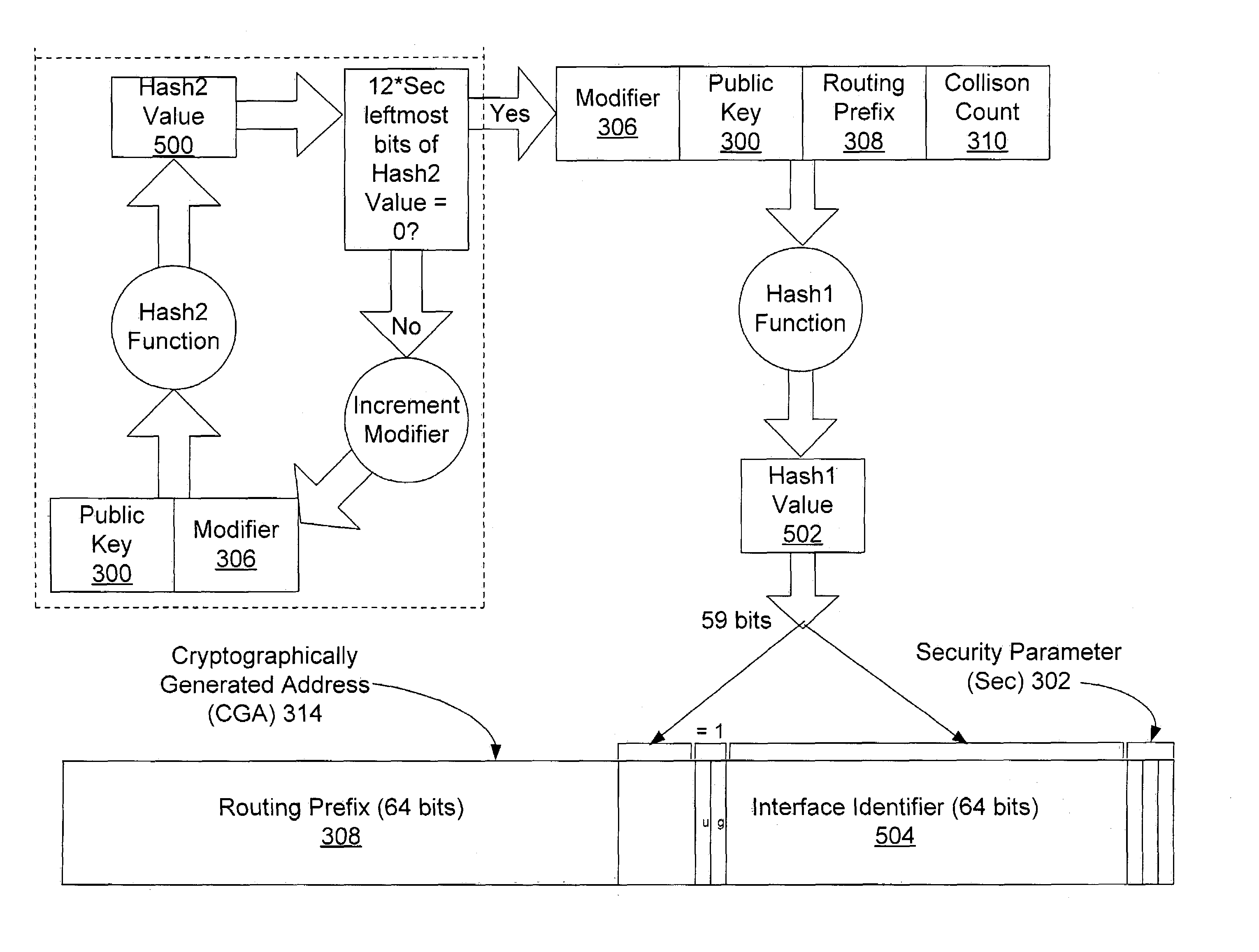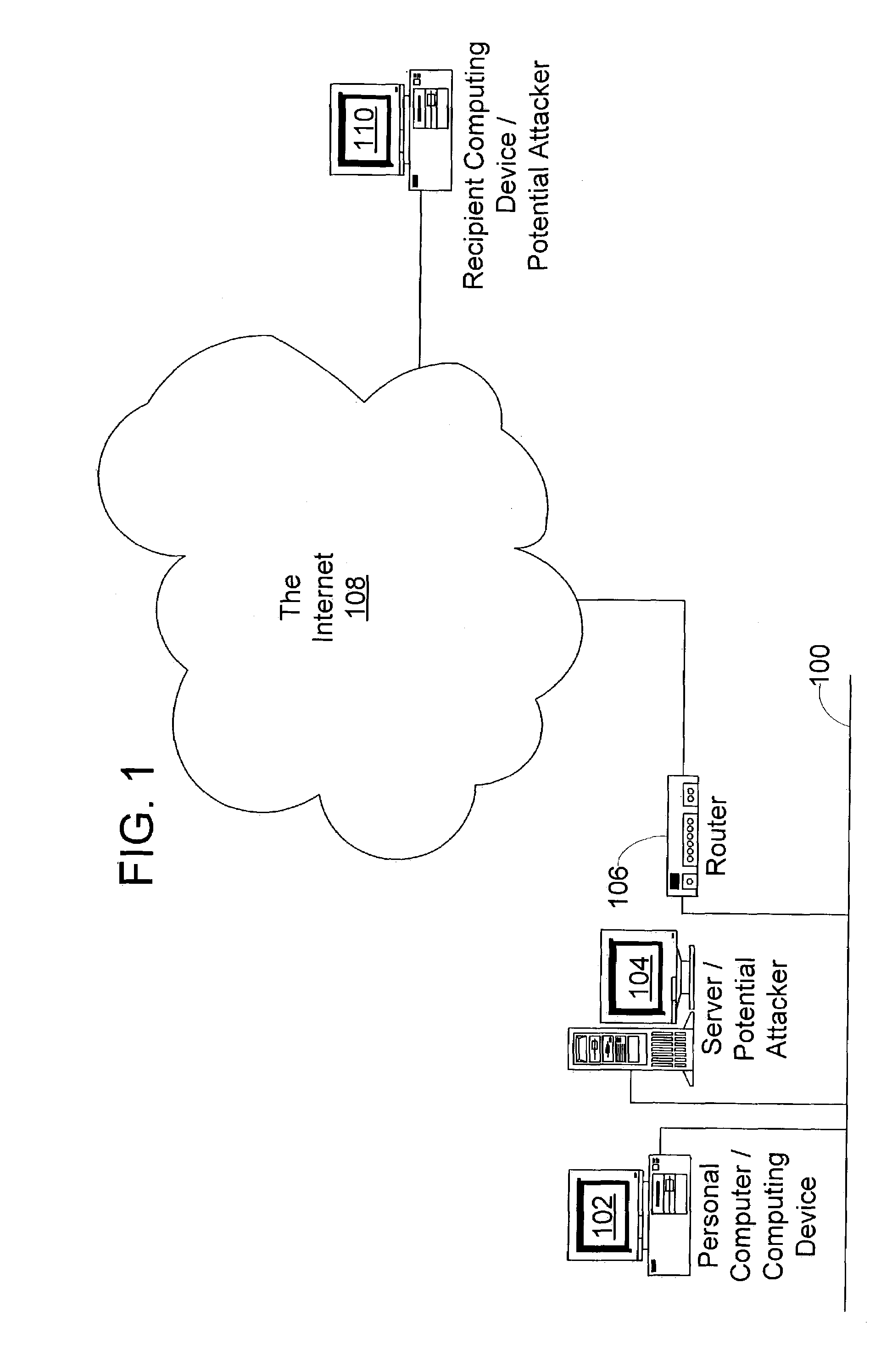Methods and systems for authenticating messages
a technology of authenticating messages and methods, applied in the field of communication in computer networks, can solve the problems of increasing the computational complexity of generating new addresses, increasing the cost of pre-computation attacks, and increasing the cost of brute-force attacks against global-scope addresses, so as to increase the cost of both address generation and verification, and the cost of address use and verification constan
- Summary
- Abstract
- Description
- Claims
- Application Information
AI Technical Summary
Benefits of technology
Problems solved by technology
Method used
Image
Examples
Embodiment Construction
[0023]Turning to the drawings, wherein like reference numerals refer to like elements, the invention is illustrated as being implemented in a suitable computing environment. The following description is based on illustrated embodiments of the invention and should not be taken as limiting the invention with regard to alternative embodiments that are not explicitly described herein. Sections I through III below describe the basics of the message authentication mechanism. Section IV presents implementation options useful in particular situations. Section V shows how the authentication mechanism operates in situations beyond those discussed in Sections I through III.
I. The Problem of Authentication
[0024]The present invention is directed to a simple, lightweight, mechanism to authenticate a message, i.e., to determine whether the message can be trusted to be from the sender address it purports to be from. This authentication mechanism can be applied to any type of message to enhance netw...
PUM
 Login to View More
Login to View More Abstract
Description
Claims
Application Information
 Login to View More
Login to View More - R&D
- Intellectual Property
- Life Sciences
- Materials
- Tech Scout
- Unparalleled Data Quality
- Higher Quality Content
- 60% Fewer Hallucinations
Browse by: Latest US Patents, China's latest patents, Technical Efficacy Thesaurus, Application Domain, Technology Topic, Popular Technical Reports.
© 2025 PatSnap. All rights reserved.Legal|Privacy policy|Modern Slavery Act Transparency Statement|Sitemap|About US| Contact US: help@patsnap.com



